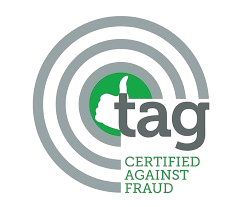Imagine the plight when the ad spends which were allocated to acquire new users and expand reach is now being cannibalized by nefarious affiliates. Brands and agencies often consider well-reputed platforms like Google, Facebook, and other platforms to give them good-quality traffic.
In 2022, advertising spending that was wasted due to invalid traffic was $54.63 billion on the global level. The Statista projected that by 2027, the spending would reach $870.85 billion.
Click Spam and Fake Attribution are all instances of click Fraud, and they contribute to 74% of Click Fraud.
Table of Contents
ToggleWhat is Click Fraud?
Click fraud, also referred to as pay-per-click fraud, is a kind of fraud that artificially inflates traffic statistics for online advertisements. In the typical pay-per-click advertising model, advertisers pay a fee for each click on their advertisement, hoping that they have attracted a potential customer.
Click fraud creates the illusion that many potential customers are clicking on the ad. However, the advertiser is unlikely to make any real human visits from these clicks as they are done by bots. It is done to increase the revenue of the publisher, and it drains the advertiser’s budget.
Types of Click Fraud?
Click Fraud ID is dominant both in the web and app ecosystems. Various types of click fraud can be seen in the digital ad ecosystem.
- Sophisticated Bots- Bots are automated scripts acting as users, they go on targeted websites and create fake impressions. Bot activity comes from devices infected with malware viruses.
- Click Farms – A click farm is a network of bots or a fraudulent operation of publishers that employs large groups of people to manually click on paid online ads.
- Ad stacking – It is a type of mobile ad fraud in which the fraudsters stack or hide multiple ads on top of one another beneath the primary ad.
- Install Hijacking– This kind of click fraud aims to make an application installation appear legitimate. This is accomplished by installing a fraudulent app covertly. The fraud app overtakes tracking codes and attributes these installs as one that occurred because of it.
- Device ID fraud– This method is used on device farms with multiple devices. The device downloads an app and clicks on real ads by using a script to click on actual ads. The gadget is then reset after that. This keeps happening over and over. There are IP address switches involved to gain the legitimacy of the act.
- Incentivized traffic– Traffic created by users who visit websites in exchange for various rewards such as money gifts, discounts, whitepapers, or game tokens. It increases website traffic and provides insightful customer data.
Red Flags of Click Fraud?
If your PPC ads regularly exhibit any of the following signs, you may need to consider reducing your exposure.
- High Bounce Rate
- Unprecedented increase in impressions and clicks
- High traffic rate but low conversions.
- Unusual clicks from some obscure country
- Anomalies in performance data
Brands need a multi-level protective mechanism to track and validate click impressions on ads. Advertisers must strengthen their defenses and prevent wastage of ad budget.
How can it be Prevented?
By implementing an active ad fraud detection system that keeps an eye on clicks and impression integrity. With AI-ML advanced technology,mFilterIt assists advertisers in real-time click fraud detection. The sophisticated algorithm aids in locating anomalies in the click data.
Let’s understand this with a case study of a major automobile player running a Google search campaign to attract new customers through various meta platforms.
Use Case
The Client faced challenges despite a healthy advertising spend, the conversion ratio (lead generation) was suspiciously low.
The key initiative to resolve this issue involves the process of:
- Blacklisting is aimed at filtering out fraudulent clicks and leads.
- Ensuring cleaner traffic
Initially, the fraud rates were high with click rates at 21.44% and lead fraud at 15.56%.
After the blacklisting process began there was a significant drop in fraud rates.
- Click fraud has reduced by 13% and lead fraud has reduced by 11%.
- Conversion Ratio trends showed an upward trajectory from 3.82% to 6.71%.
The impact on the brand blacklisting process enabled the brand to save $0.47 million due to reduced fraudulent activities and improved conversion rates.
The case highlights the importance of monitoring and managing digital advertisement campaigns to mitigate click fraud and optimize performance.
Final thought
Unchecked click fraud has the potential to damage a brand’s online reputation and gradually reduce trust in digital advertising campaigns. mFilterIt provides a strong answer to this widespread problem by successfully detecting and guaranteeing that advertising dollars are spent on genuine interactions. By removing invalid traffic, and blacklisting process with maximization of return on investment, it is an indispensable instrument to counteract click fraud.
Get in touch to learn more about Click Fraud.









